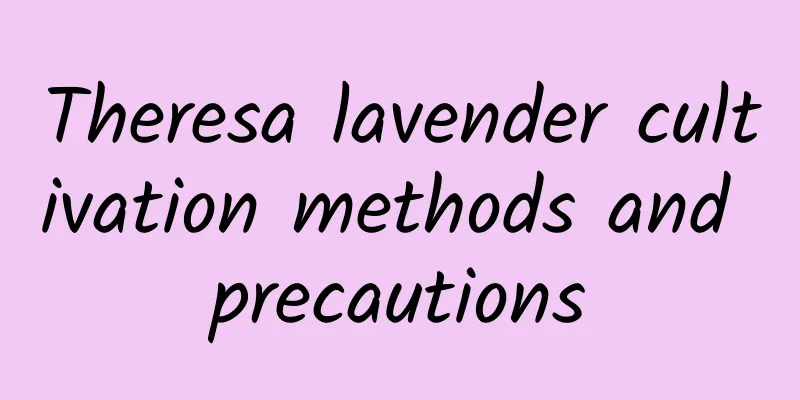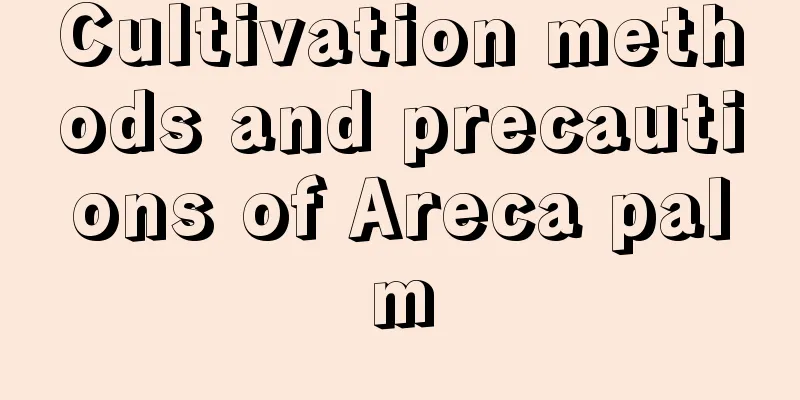Theresa lavender cultivation methods and precautions

|
Theresa lavender is a relatively easy-to-grow flower. It is native to South Africa and prefers light. It does not have too many requirements for the soil in which it grows. It is more suitable for growing in medium to large ornamental potted plants. Its leaves are relatively ordinary, but they will be more ornamental if properly maintained. Theresa lavender cultivation method1. Pot soil Theresa lavender does not require too complicated soil. If you find it troublesome, you can directly dig some garden soil from the vegetable garden to meet its growth needs. Or you can mix it with some coarse coconut coir, perlite or coarse sand, accounting for about 20%~30% is enough. 2. Lighting Theresa lavender must grow in an environment with plenty of sunlight, ensuring at least 6 to 8 hours of direct sunlight a day. It is best to grow it in a full-sun environment, unless the temperature reaches above 40 degrees, in which case appropriate shading is needed. At other times, more sunlight should be given. 3. Fertilization When fertilizing Theresa lavender, you must pay attention to applying thin fertilizers frequently. If you have time, it is best to add water-soluble fertilizers once every week. It is best to adjust the concentration to about 1000 to 1500 times. 4. Watering The watering of Theresa lavender also depends on the maintenance environment. If there is sufficient light, it should be watered thoroughly once a day. If it is full sunlight, it may even need to be watered once in the morning and evening. Theresa lavender care precautions1. Planting new seedlings For the newly bought potted Theresa lavender seedlings, we don't need to rush to change the pot. We can first place it in a ventilated and shaded place for maintenance, give it some soft scattered light, and ensure that the air humidity is above 50%. 2. Note when changing pots Before repotting Theresa lavender, remember to check whether the plant has diseased spots and the dryness and wetness of the potting soil. Then, cut off the diseased leaves and roots according to the situation, and keep the soil in a relatively dry state, so that it can recover quickly after repotting. |
<<: Breeding methods and precautions for blue butterflies
>>: Cultivation methods and precautions of green radish potted plants
Recommend
How to breed purple pearls and what to pay attention to
Purple pearl breeding method There are two method...
How often should I water the peace tree?
one. usually: 1. Generally speaking, you can add ...
When is the best time to water the newly bought Clivia after transplanting?
1. When is the best time to water? For newly purc...
How to cultivate green radish to make it more vigorous
Growing conditions of Pothos The big green radish...
How to prune persimmon trees to achieve the best yield
If the persimmon tree is pruned properly, its yie...
What to do if the leaves of lucky bamboo turn black
1. Water quality issues (1) Cause: The most likel...
Does Fragrant Wood prefer shade or sun?
Does Fragrant Wood prefer shade or sun? The fragr...
Cultivation methods and precautions of plum blossoms
1. Soil Plum blossoms have a strong adaptability ...
How to grow the lucky flower at home
Growing conditions of the lucky flower When plant...
How to propagate Buddha's palm by cuttings
The cutting propagation method of Buddha's Pa...
How many silver carp fry should be released per acre of water?
Silver carp is a type of silver carp with a flat ...
How often should banyan trees be watered? Watering precautions
How often should you water your banyan tree? When...
When is the best time to prune plum blossoms?
Plum blossom pruning time and season Spring pruni...
The best way to treat orchid root rot
Orchid is a traditional famous flower in China, a...
How to make plants take root quickly
How to quickly root plants According to the type ...









